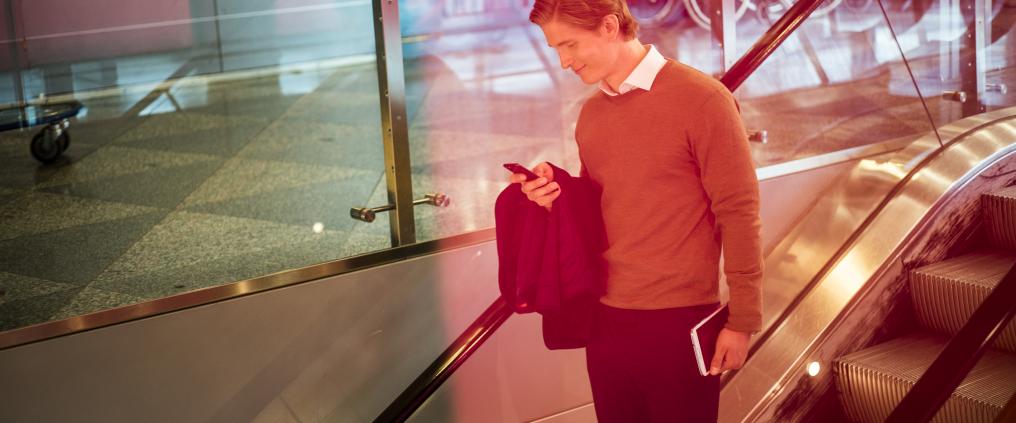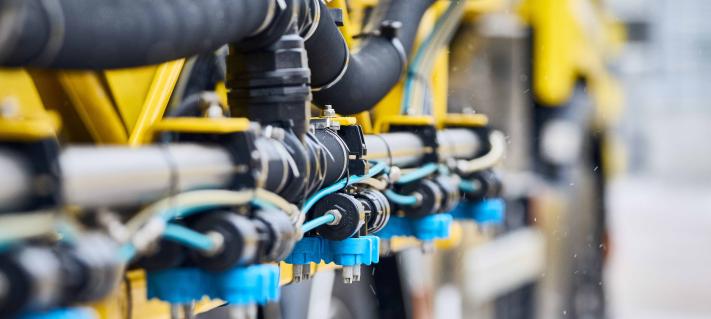A display wall that chooses which language it shows flight information in according to passengers’ nationalities. A chatbot that helps people find the right information on the airport’s web site. Face detection technology that replaces boarding passes at check-in.
These are some of the examples of technologies that utilize artificial intelligence technologies that have already been tested at Helsinki Airport.
“Finavia wants to be at the forefront of utilizing AI and digitalization. For example, the face detection pilot project carried out together with Finnair was one of the first ones of its kind, implemented in the airport operations worldwide,” says Harri Karjalainen, Chief Information Officer at Finavia.
“We must always ensure that everything works safely and smoothly at the airport. That's why we start from small pilots, that help us learn about how these technologies function. From passengers’ point of view, new technologies such as artificial intelligence can improve the comfort, reliability and functionality of airport processes.”
Here are some examples of airport AI pilots and their potential in the future:
1. A display wall targets relevant information to passengers
A pilot project carried out in the spring and summer of 2018 tests how display walls in the terminal could target relevant information to passengers based on nationality data.
“We know roughly which flight the passersby flew on, and which nationality they represent. With this information, it’s possible to ‘mass target’ the content. For instance, we can highlight the most relevant transfer flights and gates, and change the language to the passengers’ native languages,” says Henri Lehtonen, Development Manager for Digital Solutions and New Technologies at Finavia. “In addition, ad targeting can be improved using relevant data.”
The pilot project provides valuable experience on the benefits and challenges of targeting information targeting.
“In the future, airport services are likely to be found faster and easier, as a passenger receives exactly the information she or he needs, exactly when it is needed,“ Karjalainen says.
2. Chatbot helps find the right information online
Finavia has also tested a chatbot in online customer service. Utilizing language-recognition technology the online chatbot guides customers to the right information on Finavia’s website.
“Artificial intelligence can guide a customer to the right page, when they are looking for general information that can be found on the site. This gives customer service more time to solve more challenging problems,” says Tommi Vihervaara, Head of Data Analysis.
3. The price of the parking space depends on demand
Artificial intelligence is also used in the airport’s parking pricing. Price determination is dynamic, i.e. it depends on the time the parking space is reserved – similarly to how airline and train tickets are priced.
“Dynamic pricing favors those who book parking in advance and helps the airport optimize the use of parking spaces,” says Karjalainen.
4. Tidier restroom facilities with optimized cleaning
In an ongoing pilot project at Helsinki-Vantaa, restroom cleaning has been optimized based on data.
“After using a restroom, passengers can provide feedback, which is used to direct cleaning staff to the right locations,” Karjalainen says.
In the future, restroom conditions could also be monitored, for example, by attaching sensors to detect the movement of door hinges or the sounds running toilets, says Karjalainen.
“Restroom cleanliness is a key factor affecting airport comfort, so better-optimized cleaning is an important development point.”
5. Machine vision tested in face recognition and in tracking passenger processes
Finavia and Finnair tested machine-based face recognition technology with 1000 test passengers at check-in at Helsinki Airport. In the future, technologies based on machine vision and biometric identification could even allow travelling without showing your boarding pass at all.
“We would most definitely like to advance 'hands in pockets' travel, where a passenger would not need to display any travel documents at all. The relevant technology is available already, but it will require joint development work between the airport, airlines and public authorities before these solutions become an every-day reality,” Vihervaara says.
Machine vision has also been tested in optimizing airplane turnaround time and related processes.
“Our network airports have tested technology which monitors the unloading of passengers from the aircraft and can notify the de-icing trucks on when they should arrive. This kind of automated analysis could accelerate our processes and be enormously useful in aviation logistics,” Lehtonen adds.
All in all, according to Karjalainen, Lehtonen and Vihervaara, artificial intelligence is an important part of the digital solutions portfolio, but not a miracle maker in itself.
“AI is very trendy right now, but it’s just one tool, not an omnipotent master,” says Lehtonen.
“The starting-point should always be in truly understanding the challenges of everyday life, and then daring to try new solutions, including artificial intelligence, with an open-mind.”



